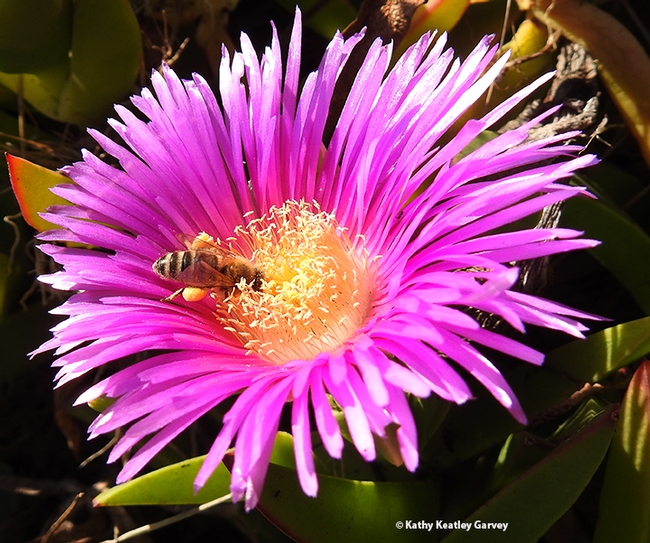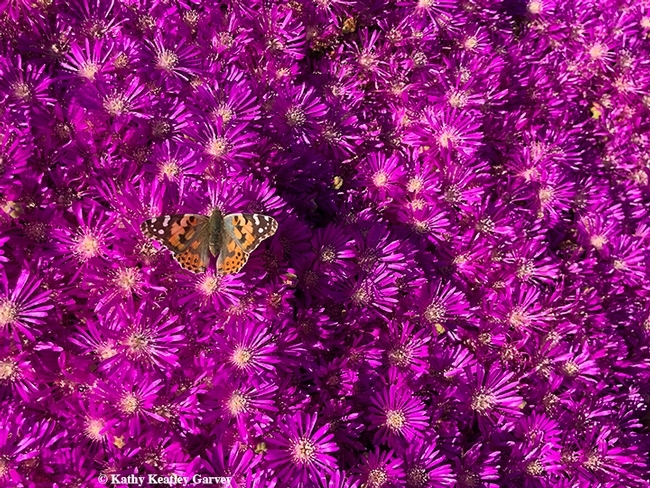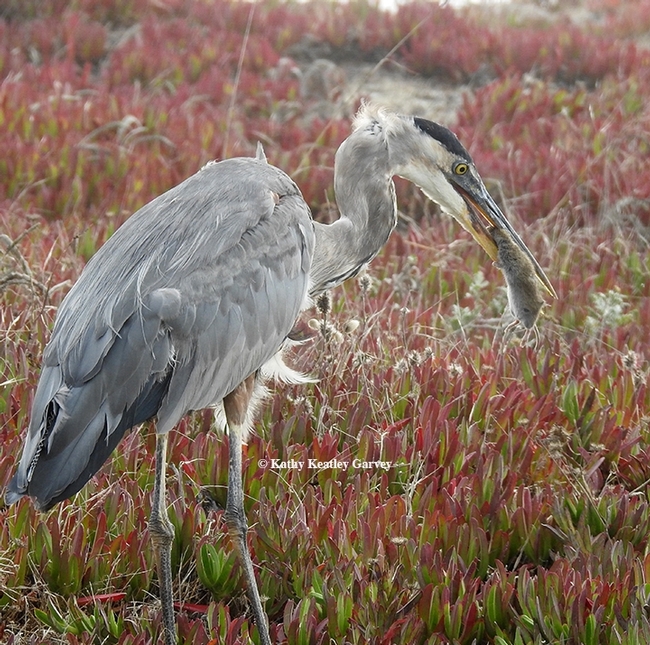If you vacationed at Doran Regional Beach, Bodega Bay, on a Wednesday last year (pre-COVID-19 pandemic), chances are you saw scores of dedicated volunteers pulling out the invasive ice plant, Carpobrotus edulis, along 201 Doran Beach Road. It's hard work but it's rewarding.
Wednesday was--or is--Ice Plant Removal Day. (See the Sonoma County Regional Parks website.)
C. edulis, a succulent native to South Africa, is unwanted in Bodega Bay's wetlands because it chokes out native, endangered plants and alters the soil composition. When it's removed, native plant species return as do a diversity of wanted wildlife.
Yes, nurseries sell ice plant as a ground cover because it's hardy, easy to grow, and spreads quickly. The neon pink blossoms, in particular, are spectacular. (See photo)
C. edulis, though, is as pervasive as it is pretty. It's the flora equivalent of Public Enemy No. 1.
Nevertheless, you'll see "wanted" insects foraging on the "unwanted" plants along the Doran Beach trails. We've seen honey bee and butterflies foraging on the blossoms--including a pollen-packing bee seeking nectar--a short distance from the ice plant removal site. And once we saw a Great Blue Heron snatch a vole from the ice plant growing along the Jetty Campground, Doran Beach.
Beauty and beasts are where you find them, whether they're flora or fauna or wanted or unwanted. Take a hike. Take a camera. Or, better yet, volunteer for an Invasive Plant Removal Day. The California Native Plant Society will thank you.
Attached Images:

A honey bee foraging on ice plant along Doran Beach, Bodega Bay. Both the bee and the plant are non-native. (Photo by Kathy Keatley Garvey)

A painted lady butterfly, Vanessa cardui, takes a liking to this ground cover of ice plant, sold at many nurseries. This image was taken in West Vacaville. (Photo by Kathy Keatley Garvey)

A Great Blue Heron snatched this vole from a mat of ice plants along Jetty Campground, Doran Beach, Bodega Bay. (Photo by Kathy Keatley Garvey)